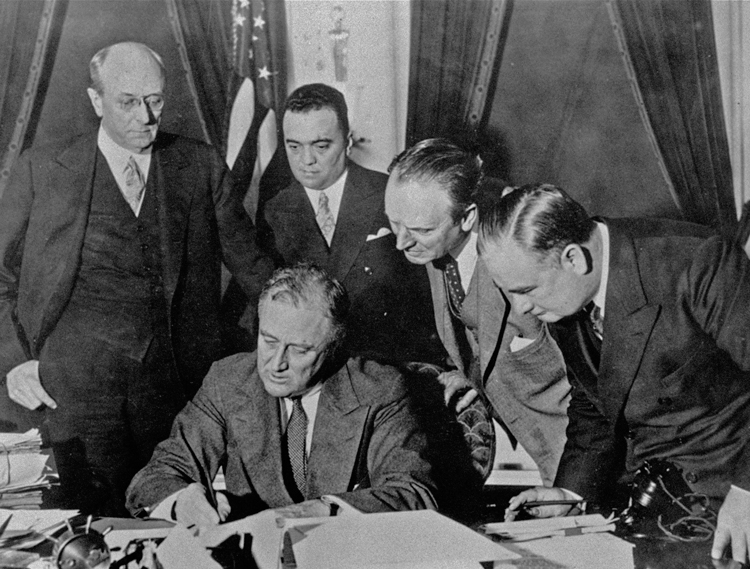50 Years of Covert Operations in the US: Washington’s Political Police and the American Working Class by Larry Seigle, Farrell Dobbs and Steve Clark is one of Pathfinder’s Books of the Month for November. It traces the U.S. capitalist rulers’ use of the FBI, their political police, to target the unions, the Socialist Workers Party and other working-class organizations, as well as movements for Black rights and against the Vietnam War. Today the FBI and the Justice Department have been central to the Democrats’ campaign to try to prevent Donald Trump from winning the presidency again. This deals blows to constitutional freedoms vital to the working class and its vanguard. The excerpt is from the introduction by Steve Clark, a member of the SWP National Committee. Copyright © 2014 by Pathfinder Press. Reprinted by permission.
Fifty Years of Covert Operations in the US points to the century-and-a-half-long proletarian course that made possible what the Socialist Workers Party accomplished through its political campaign to expose government spying and harassment and mobilize opposition to it. From the moment the SWP filed its lawsuit in 1973 through the 1981 trial and post-trial proceedings, the article [by Larry Seigle] says, the government
kept trying to prove that the party said one thing in public and something different in its closed meetings. They tried to establish that the party maintained dual structures, one for public purposes and the other hidden from view. In every case, the facts showed the opposite. While a workers’ party has the right, in fact the responsibility, to protect the privacy of its members and supporters from the bosses and the police, it has no right to keep its ideas, methods, and organizational concepts hidden from working people. …
As the trial demonstrated, the FBI’s accusations of conspiracy and hidden goals were pure projection. It turned out to be the White House and FBI, not the SWP, that conceal their aims and methods. It turned out to be the White House and FBI, not the SWP, that maintain a covert structure to carry out what they cannot openly proclaim. It turned out to be the White House and FBI, not the SWP, that rely on conspiratorial modes of operation to achieve their goals behind the backs of the people of the United States.
The article traces the expansion of Washington’s political police since US imperialism’s repressive response, in the aftermath of World War I, to the Bolshevik-led October 1917 revolution in Russia and forging of the Communist International two years later — and their impact on workers and farmers in the United States who sought to emulate those revolutionary examples. The government’s aim above all was to crush the newborn communist organizations in the US founded in 1919. (Already in those years, J. Edgar Hoover headed the Justice Department cop agency that targeted communist and anarchist workers, their organizations, and Black leaders such as Marcus Garvey and A. Philip Randolph. That agency became the Federal Bureau of Investigation in 1935, and Hoover remained its director until his death in 1972.)
This book puts a special focus on the Democratic administration of President Franklin Roosevelt in the late 1930s, as the US rulers prepared to enter the imperialist slaughter of World War II. It describes the growth and consolidation of the “national security” state in the wake of Washington’s military, political, and economic victory in that war over its imperialist rivals, both “foes” (Germany, Austria, Italy, and Japan) and “allies” (the United Kingdom, France, and others).
The 1941 conviction and imprisonment of eighteen leaders of the Socialist Workers Party and class-struggle Teamsters leadership in Local 544-CIO in Minneapolis was a turning point in the buildup of US capital’s political police. The frame-up was the Roosevelt administration’s first use of the Smith “Gag” Act outlawing advocacy of revolutionary ideas, which the Democratic president had signed into law the previous year. The real “crime” of these working-class leaders was that they were effectively organizing political opposition within the unions to Roosevelt’s drive to whip up popular support for the US rulers’ war aims that workers and farmers would be sent to fight and die for.
During the 1981 trial of the SWP’s lawsuit, a chief government witness, Robert Keuch, an associate deputy attorney general, was questioned by an attorney for the SWP about Roosevelt’s 1939 executive order directing the FBI to step up its “investigation” of “subversive activities.” Keuch replied that “there are simply ways that individuals and groups can act that may not necessarily constitute violations of the criminal statutes” (translation: that are legal even under US bourgeois law). The White House was concerned first and foremost about those “who were trying to influence public opinion to keep the United States out of war, to keep us neutral,” the Justice Department official testified.
The “crime” of “trying to influence public opinion” about the coming war was sufficient for Roosevelt to shred the Bill of Rights.
This new edition includes the article “Imperialist War and the Working Class” by Farrell Dobbs, which deals with these origins of Washington’s “covert war” at home. Dobbs was a convicted Smith Act defendant, a leader of the Teamster organizing drives in Minneapolis and the upper Midwest, and then a central leader of the SWP for decades. He wrote this piece in 1949 as an introduction to the third edition of Socialism on Trial, the trial testimony by SWP national secretary James P. Cannon.
Dobbs also recounts and condemns the Smith Act prosecution in New York in early 1949 of eleven leaders of the Communist Party, which is described in the opening article in this book. All were convicted, and ten were given the maximum sentence of five years. Dobbs, who covered this nine-month frame-up trial week in and week out for the Militant newspaper, points to the political blow the Communist Party leadership dealt to the working-class movement by its refusal to defend the first Smith Act defendants during the 1941 trial in Minnesota.


